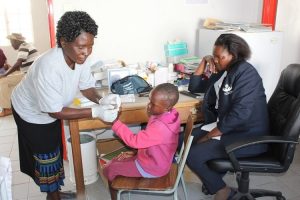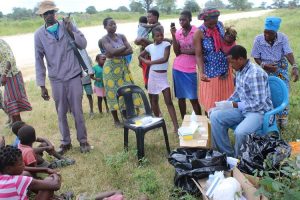
Community Based Malaria Prevention
Namibia aims to eliminate Malaria by 2020. Malaria is a serious health problem, especially for children and pregnant women. Although malaria can be severe, early and appropriate treatment is very effective. A failure to recognize danger signs and a delay in treatment often has serious consequences, including death, especially for children.
Based on the End Term Review of the Namibia Malaria Strategic Plan 2010-2017, it is noted that Namibia is seeing a change in the epidemiological context as a result of the increased malaria incidence with outbreaks occurring in 2013, 2014, 2016 and 2017. Over 57% of the population at risk of malaria is in the North East of the country bordering the high endemic areas of Angola and Zambia.
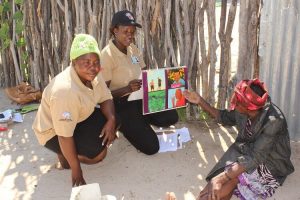
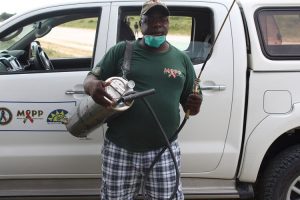
As part of a long standing collaborative agreement between the Society for Family Health and the Ministry of Health and Social Services – National Vector-borne Diseases Control Programme (NVDCP) and with funding from Global Fund to fight AIDS, tuberculosis and malaria, SFH implements a community based malaria prevention program in Omusati, Oshana and Kavango East. The malaria program has been in existence since 2003 in these communities working in close collaboration with community leaders and health facilities supporting prevention activities, surveillance and distribution of mosquito nets. There are over SFH’s 130 community health workers (CHWs) and 5 program officers in the regions.
The objectives of the program are to:
Increase the utilization of long-lasting insecticidal nets (LLIN)
♦ Increase timely care seeking for complicated malaria among children under five and pregnant women.
♦ Strengthen collaboration between health structures and communities through social mobilization and home visits.
♦ Promote appropriate management of malaria in households and communities.
The core functions of SFH’s (CHWs) are to:
♦ Support social and behavior change communication activities in accordance with the national strategy.
♦ Increase acceptance and utilization of interventions such as mosquito nets.
♦ Ensure that the community understands the public health benefit of treating all infected persons, regardless of their symptoms more especially during outbreaks.
Highlight of achievements:
Over the recent years, the program has observed remarkable reduction in malaria cases especially in Omusati and Oshana regions. Although Kavango East has also made steady improvements in malaria cases and deaths, these gains are usually derailed because of low coverage of malaria interventions in high malaria endemic neighboring countries and high population movement with increased risk of importation of malaria parasite.
- Approval for community health workers to diagnose malaria and prescribe antimalarial medicines for management of uncomplicated cases was granted by Namibia Medicines Regulatory Council.
- Community health workers (CHWs) continue to reach community members with Malaria messages through household visits and community outreach events.
- Nine (9) community health workers were trained in malaria case management including RTDs
- The Malaria Rapid Test and treatment pilot was carried out in Kangongo Biro clinics, Etilyasa and Onkani district.
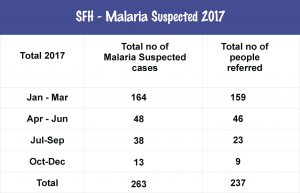
House to-house visits will be conducted by the community health workers (CHWs) to determine fever/signs and symptoms of malaria.As the program move forward with the rollout in 2018, methodology and approach for testing and treating uncomplicated malaria in hard to reach areas include:
- The CHCs will test for malaria with Rapid Diagnostic Test (RDT) and treat individuals with a positive RDT, and no signs of severe/complicated malaria;
- Refer individuals with any sign of severe/complicated malaria and also refer individuals with fever that are negative for malaria.
- Referrals of patients under the age of five and pregnant women to the nearest health facility
- Registration of households for distribution of LLINs
- Distribution of LLINs to households
- Follow up and monitoring of LLIN usage
- Collaboration with the nearest health facility’s staff
- Monthly submission of report to health facilities and partner supervisors and wekly reporting.
Malaria outreach session being conducted by SFH community health worker in Omusati region.
Challenges addressed
- Some households are not adequately supplied with mosquito nets due to unclear procedures. Before any distribution is made, there should be clear standard operating procedures (SOPs) and adhered to in ensuring good distribution of the nets.
- Some clients diagnosed with malaria symptoms during household visit do not reach the health facilities when referred due to distance and lack of transport.
- The participation of adults 15years and above during community outreach events continues to remain a challenge due to migration, family and work commitments.
wordpress theme by initheme.com

